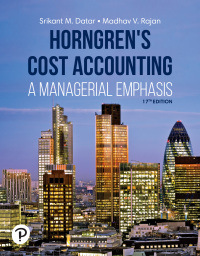Gadgets Galore Corp. produces J-Pods, music players that can download thousands of songs. Gadgets Galore forecasts that
Question:
Gadgets Galore Corp. produces J-Pods, music players that can download thousands of songs. Gadgets Galore forecasts that demand in 2020 will be 22,800 J-Pods. The variable production cost of each J-Pod is $52. In its MRP system, due to the large $19,000 cost per setup, Gadgets Galore plans to produce J-Pods once a month in batches of 1,900 units. The carrying cost of a unit in inventory is $15 per year.
Required
1. Using the MRP system, what is the annual cost of producing and carrying J-Pods in inventory? (Assume that, on average, half of the units produced in a month are in inventory.)
2. A new manager at Gadgets Galore has suggested that the company use the EOQ model to determine the optimal batch size to produce. (To use the EOQ model, Gadgets Galore needs to treat the setup cost in the same way it would treat ordering cost in a traditional EOQ model.) Determine the optimal batch size and number of batches. Round up the number of batches to the nearest whole number. What would be the annual cost of producing and carrying J-Pods in inventory if it uses the optimal batch size? Compare this cost to the cost calculated in requirement 1. Comment briefly.
3. Gadgets Galore is also considering switching from its MRP system to a JIT system. This will result in producing J-Pods in batch sizes of 300 J-Pods and will reduce obsolescence, improve quality, and result in a higher selling price. Gadgets Galore will reduce setup time and setup cost. The new setup cost will be $200 per setup. What is the annual cost of producing and carrying J-Pods in inventory under the JIT system?
4. Compare the models analyzed in the previous parts of the problem. What are the advantages and disadvantages of each?
Step by Step Answer:

Horngrens Cost Accounting A Managerial Emphasis
ISBN: 9780135628478
17th Edition
Authors: Srikant M. Datar, Madhav V. Rajan





